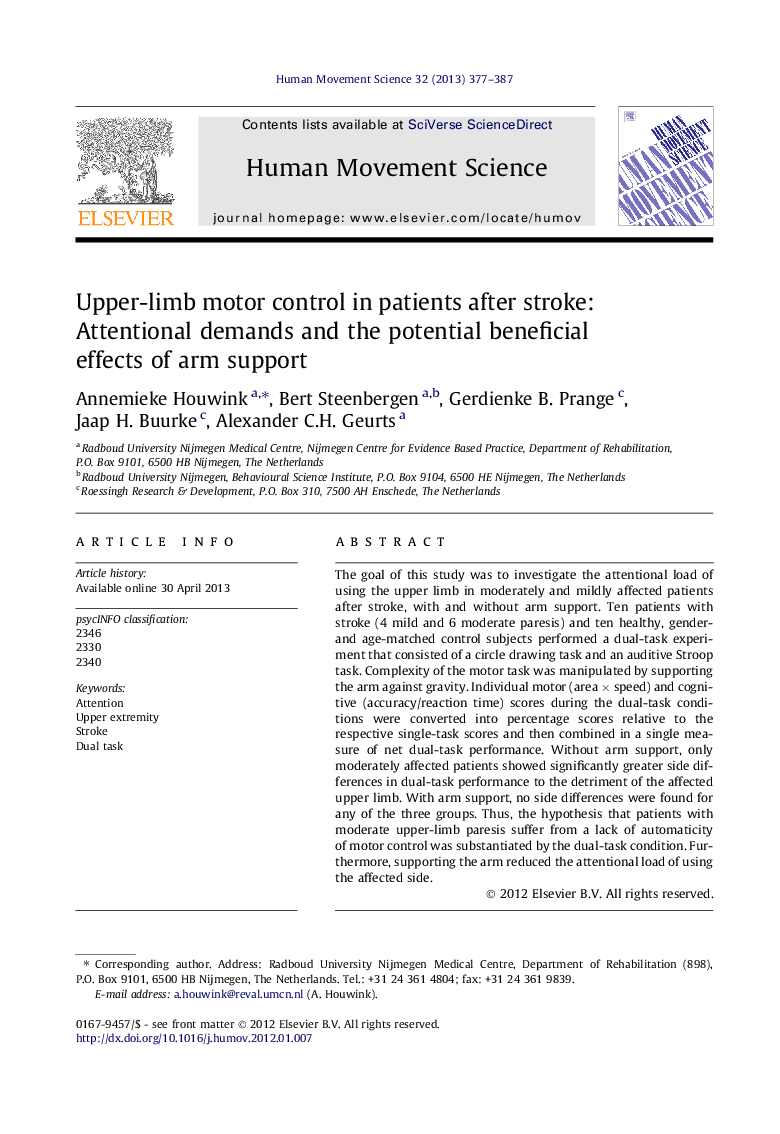| Article ID | Journal | Published Year | Pages | File Type |
|---|---|---|---|---|
| 928436 | Human Movement Science | 2013 | 11 Pages |
The goal of this study was to investigate the attentional load of using the upper limb in moderately and mildly affected patients after stroke, with and without arm support. Ten patients with stroke (4 mild and 6 moderate paresis) and ten healthy, gender- and age-matched control subjects performed a dual-task experiment that consisted of a circle drawing task and an auditive Stroop task. Complexity of the motor task was manipulated by supporting the arm against gravity. Individual motor (area × speed) and cognitive (accuracy/reaction time) scores during the dual-task conditions were converted into percentage scores relative to the respective single-task scores and then combined in a single measure of net dual-task performance. Without arm support, only moderately affected patients showed significantly greater side differences in dual-task performance to the detriment of the affected upper limb. With arm support, no side differences were found for any of the three groups. Thus, the hypothesis that patients with moderate upper-limb paresis suffer from a lack of automaticity of motor control was substantiated by the dual-task condition. Furthermore, supporting the arm reduced the attentional load of using the affected side.
► Attentional load of upper-limb use is assessed with a dual-task paradigm. ► Patients with stroke are compared to healthy control subjects. ► Patients with moderate paresis experience more dual-task interference. ► With arm support, the interference is reduced. ► Control of the affected arm in stroke patients is associated with increased attentional demands.
